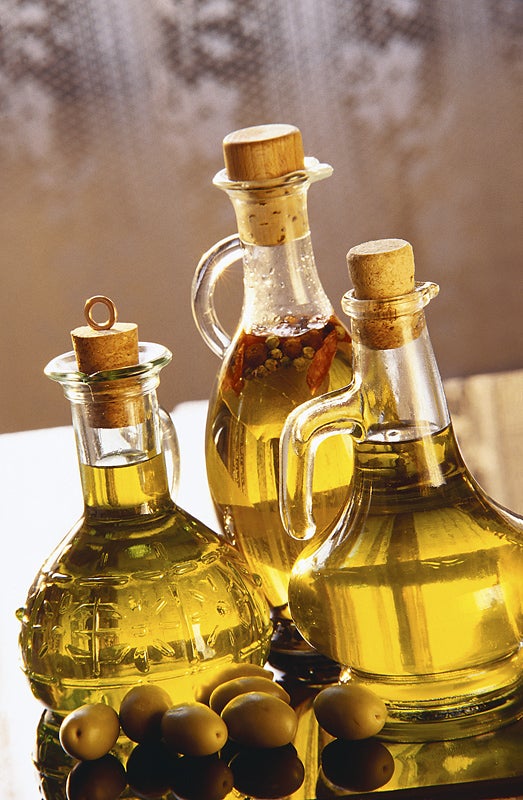August 12, 2014
 Test Your Oil IQ
Test Your Oil IQ
Oils are naturally found in certain foods and are commonly used in cooking, baking and frying. Some are used as flavoring and even in place of butter for dipping bread. Certain oils are better for cooking than others based on the amount of heat they can withstand, also referred to as oil’s smoke point. All oils contain fat and calories, but with so many oils to choose from, it can be hard to decipher which oils are best for each purpose and which ones are the most heart and kidney healthy.
The National Kidney Foundation helps break down the different oils with key clues to help you match the oils (numbers 1-7) with their proper descriptors (letters A-G). Scroll to the bottom of the page when you’re finished guessing to check your answers.
- Olive Oil
- Canola Oil
- Peanut Oil
- Flaxseed Oil
- Corn Oil
- Coconut oil
- Cottonseed oil
- Sometimes referred to as linseed oil, this oil can easily become rancid so it is usually stored in the refrigerator. Rich in omega-3 fatty acids and omega-6 fatty acids, this oil is another good choice to incorporate into your diet. With a low smoke point (225 °F), it is not usually used in cooking. This oil can be used for salad dressing, steamed vegetables, or when cooking rice. It is also sometimes used as a component in margarine.
- This type of oil is made from peanuts and can have a slightly “nutty” flavor. It is very rich in omega-6 fatty acids. In just one tablespoon, this oil has 4,321 mg of omega-6 fatty acids. It also has a very high smoke point (437 °F) which makes it ideal for frying foods and using in stir fry dishes.
- This oil is made from a crop also used to making clothing. It has a high ratio of saturated fat, which is an unhealthy fat, and is often used in salad dressings and mayonnaise. This oil has a higher smoke point (420 °F) and mild flavor.
- This type of oil is produced from the seeds of rape plants (rapeseed). It does not contain phosphorus or potassium and is heart-healthy because of its high content of MUFAs and polyunsaturated fats (PUFAs), making it very rich in omega-3 fatty acids and omega-6 fatty acids. Omega-3 and omega-6 are types of fatty acids, meaning we cannot make them on our own and are required to get them from diet. We need omega-3 fatty acids and omega-6 fatty acids for many reasons, from building healthy cells to maintaining brain and nerve function. This oil has a mild flavor and a higher smoke point (400 °F). As such, it is often used for sautéing at higher heat, cooking and baking. This oil is also low in saturated fat.
- This is a less expensive oil with a very high smoke point (450 °F) that makes it an ideal frying oil. For this reason, many fast food chains use this oil for their French fries. It contains a high amount of saturated fat and 7,222 mg omega-6 fatty acids in one tablespoon. Derived from the germ of maize, this oil is also sometimes a component in margarine.
- This type of oil is derived from pressed whole olives. It is very rich in monounsaturated fats (MUFAs), which may improve your cholesterol level and decrease your risk of developing cardiovascular disease. This oil is also a healthy choice for people with kidney disease; 1 tablespoon has less than 1 mg sodium, less than 1 mg potassium, and 0 mg of phosphorus. It’s often used in salad dressings and can have a can have a stronger flavor than some of other types of oils. When cold pressed, it retains more nutrients. It has a moderate smoke point (374 °F) and high heat can change the taste of this oil.
- This oil is derived from a fruit. It contains a high amount of saturated fat which contributes to it having a long shelf life. However, a diet high in saturated fat increases your risk of developing cardiovascular disease. It has a moderate smoke point (350 °F) and is often used in cooking.
References:
Peanut Oil
Corn Oil
Many thanks to Susan Lupackino, MHS, RD, LDN for her contributions to this article.
Answers:
1. F
2. D
3. B
4. A
5. E
6. G
7. C

















